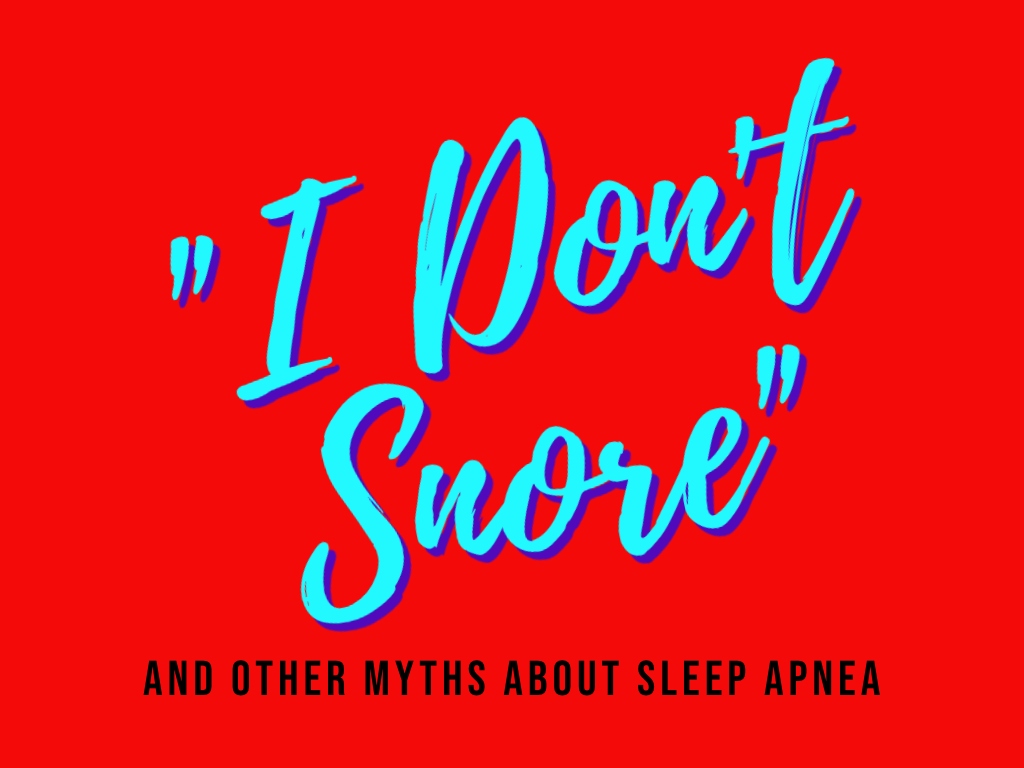“I had a problem that I was kind of embarrassed about,”says Rosie O’Donnell. “I was tossing, turning, and snoring like a buzz saw.”
Every night, millions of people like Rosie miss out on countless hours of sleep because of sleep apnea—and many more cases go undiagnosed!
Many women going through menopause assume they have insomnia, but they may have sleep apnea. Moreover, the two conditions have similar symptoms, including daytime fatigue, mood problems, and decreased work productivity. This is why it’s so important to be tested for sleep apnea rather than try to treat your condition with over-the-counter sleep aids or blame the quality of your duvet for maintaining a healthy night’s sleep.
Sleep Apnea Myth: “I’m a light sleeper.”
Studies have shown over and over again that you, as a patient, are very poor at predicting whether or not you have obstructive sleep apnea. This is because it only happens while you are sleeping.
Sleep Apnea Myth: “I don’t snore.”
Many people think obstructive sleep apnea is severe snoring. But many people with mild to moderate conditions may not snore at all. Remember that snoring, by definition, means that one is still breathing (somewhat). Apnea means total blockage. So,if you are not breathing, you are not snoring.
Rosie’s doctor said that when she underwent a sleep test, they discovered she was waking up over 200 times during the night, and she stopped breathing for almost forty seconds.
However, this severe condition affecting many people with diabetes is treatable.
Sleep apnea is a blockage of the airway, making it difficult to breathe. When this happens, your body wakes up so you can breathe, resulting in sleep loss.
Once a proper diagnosis was reached, Rosie was treated with CPAP, or a continuous positive airway pressure machine. She admitted that after one night of use with the CPAP she noticed an incredible difference.
Could sleep apnea be slowly ruining your life and hurting your health? You’ll never know until you get tested like Rosie O’Donnell. There are many options for getting an official diagnosis of sleep apnea, including a home sleep test.
Obstructive sleep apnea (OSA) alters glucose metabolism and promotes insulin resistance. Over time these consistently higher glucose levels lead to a higher A1C and a diagnosis of type 2 diabetes.
We’re talking about nighttime diabetes management with musical inspiration from Gladys Knight & The Pips courtesy of SONY Music.
Gladys Knight doesn’t have diabetes, but the disease is as close to her heart as the memories of her mother, Elizabeth Knight, who died of complications from the disease in 1997. The five-time Grammy award winner never misses an opportunity to voice the message of early detection and treatment of diabetes.
Gladys shares her final words of wisdom: ”Do something about diabetes … Know more, do more!” Knight feels nearly as passionate about spreading that message as she does about the incredible singing career her mom helped her launch some 54 years ago.
Guests include Stacey Harris aka The Diabetic Pastry Chef, Mary Ann Hodorowicz, RD, LDN, MBA, CDCES, CEC, SleepyHead Central founder Tamara Sellman RPSGT, CCSH, Poet Lorraine Brooks and Mama Rose Marie.


